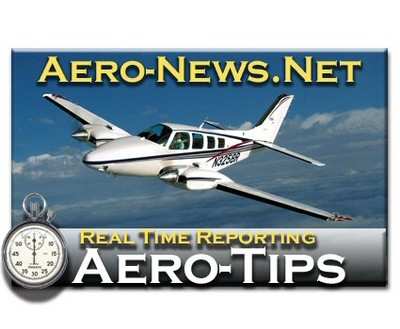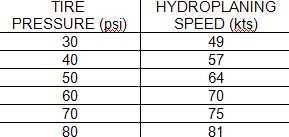Sun, Jul 02, 2006
Aero-Tips!
A good pilot is always learning -- how many times have you
heard this old standard throughout your flying career? There is no
truer statement in all of flying (well, with the possible exception
of "there are no old, bold pilots.")

Aero-News has called upon the expertise of Thomas P. Turner,
master CFI and all-around-good-guy, to bring our readers -- and us
-- daily tips to improve our skills as aviators. Some of them, you
may have heard before... but for each of us, there will also be
something we might never have considered before, or something that
didn't "stick" the way it should have the first time we memorized
it for the practical test.
Look for our daily Aero-Tips segments, coming each day to
you through the Aero-News Network.
Aero-Tips 07.02.06
Landing on a wet runway? Beware of hydroplaning.
Hydroplaning occurs when a thin film of water builds between a
tire and actually lifts it from the runway. Tires are no longer in
contact with the ground; braking looses its effectiveness, and you
may not be able to steer the airplane.
Studies show that hydroplaning can occur in as little as
one-tenth inch of water. The speed at which an airplane tire
hydroplanes is a direction function of the tire pressure. The National Aeronautics and Space Administration
(NASA) identifies the hydroplaning critical speed as
nine times the square root of the tire pressure. This means most
light airplanes can hydroplane at as low as 50 knots.

NASA Critical Speed for
Hydroplaning
Landing on a wet runway
Aviation legend Sparky Imeson tells us that to avoid
hydroplaning when landing on a wet runway:
- Touch down as close to the approach end of the runway as
possible, to maximize available landing distance
- Plan a firm arrival, to put the tires solidly against the
pavement
- Lower the nose wheel as soon as possible to maximize steering
capability
- Avoid applying brakes at or above the NASA critical speed for
your airplane
- Retract flaps to put more weight on the wheels, increasing
directional control (note: attempting to retract flaps during the
landing roll is a common cause of inadvertent landing gear
retraction in retractable-gear airplanes)
- Divert to a more suitable airport if a wet runway is combined
with a crosswind
Aero-tip of the day: Anticipate hydroplaning,
and adjust your landing technique accordingly.
More News
Aero Linx: Transport Canada We are a federal institution, leading the Transport Canada portfolio and working with our partners. Transport Canada is responsible for transportation p>[...]
Gross Navigation Error (GNE) A lateral deviation from a cleared track, normally in excess of 25 Nautical Miles (NM). More stringent standards (for example, 10NM in some parts of th>[...]
From AirVenture 2017 (YouTube Edition): Flight-Proven Booster On Display At AirVenture… EAA AirVenture Oshkosh is known primarily as a celebration of experimental and amateu>[...]
Aircraft Parachute System (CAPS) Was Deployed About 293 Ft Above Ground Level, Which Was Too Low To Allow For Full Deployment Of The Parachute System Analysis: The day before the a>[...]
Also: 48th Annual Air Race Classic, Hot Air Balloon Fire, FAA v Banning 100LL, Complete Remote Pilot The news Piper PA-18 Super Cub owners have been waiting for has finally arrived>[...]
 ANN's Daily Aero-Linx (06.29.25)
ANN's Daily Aero-Linx (06.29.25) ANN's Daily Aero-Term (06.29.25): Gross Navigation Error (GNE)
ANN's Daily Aero-Term (06.29.25): Gross Navigation Error (GNE) Classic Aero-TV: Anticipating Futurespace - Blue Origin Visits Airventure 2017
Classic Aero-TV: Anticipating Futurespace - Blue Origin Visits Airventure 2017 NTSB Final Report: Cirrus SR22
NTSB Final Report: Cirrus SR22 Airborne Affordable Flyers 06.26.25: PA18 Upgrades, Delta Force, Rhinebeck
Airborne Affordable Flyers 06.26.25: PA18 Upgrades, Delta Force, Rhinebeck




